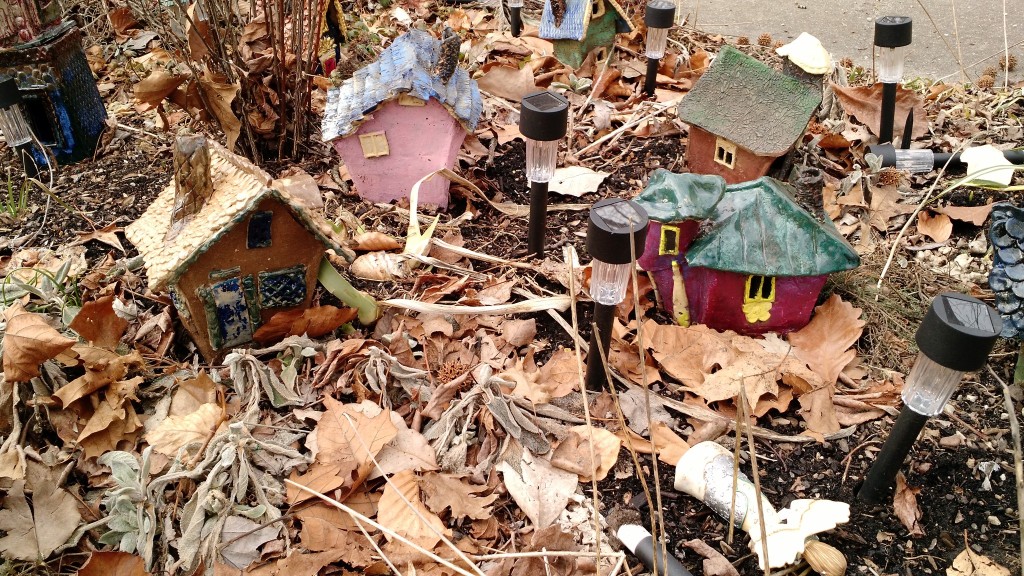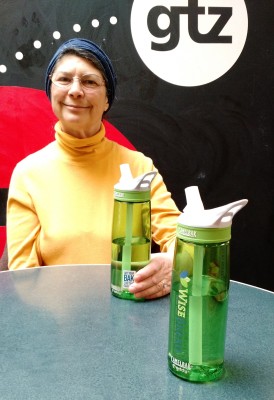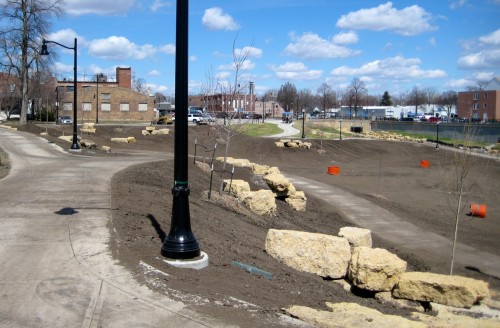“The best available science indicates that the effects of climate change will continue to adversely impact the basin,” — this from the latest issue of the water-policy journal “Duh!”
Tag: water amenity
2021-09-28 07:42
I have always said, water knows where it ought to go better than the Army Corps of Engineers does.
Where were these flooded basements? Judging by the news reports, mainly dug into the old stream courses and freshwater wetlands of the city.
2020-02-23 06:36

This is the little creek that runs behind Winfield Village. You can’t see it in this image, but there’s a small mammal in the water. (Here, sorta: small mammal.) 📷 #mbfeb
A little vitamin W
Since reading a couple of weeks ago about the importance of blue places for both physical and mental health, I’ve been trying to spend a little more time near water, and to pay attention when I’m there.
Today Jackie and I took a short walk along the little creek that runs just south of Winfield Village. It’s really a spectacular amenity that I don’t appreciate nearly as much as I should. (I spend a lot of time admiring our little prairie and our little woods, but I mostly just cross the creek itself with scant notice—nowhere near what it deserves.)
Perhaps you can help me catch up on appreciating our creek. Is it not admirable?

It got me some vitamin W for the water and some vitamin N for the nature, but sadly no vitamin D. The vitamin D window has closed, and won’t open again for 57 days.
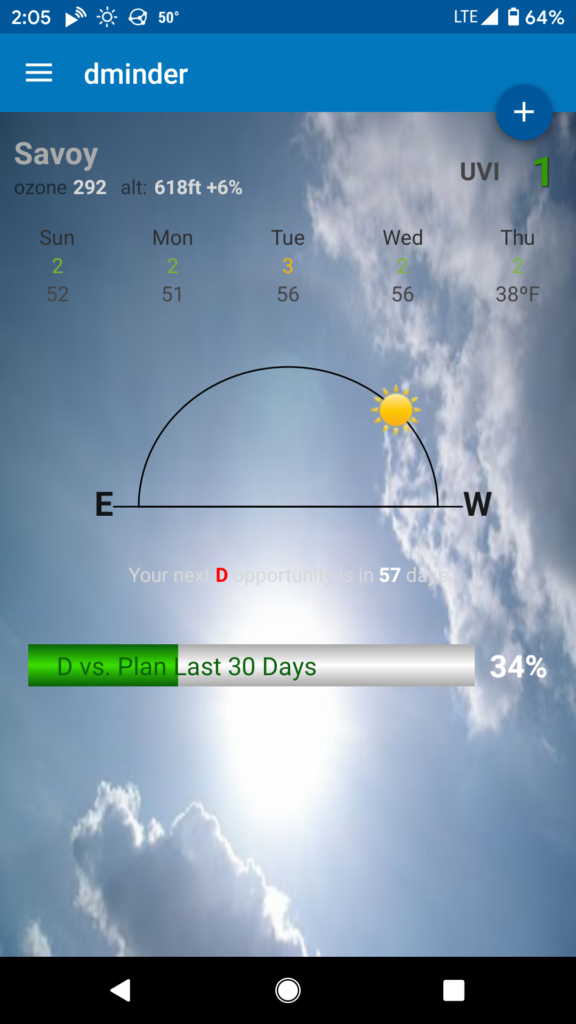
Blue and green spaces
I make an effort to get out into nature as often as possible. With our little prairie and woods nearby, it’s possible almost every day. Larger natural areas—Forest Glen, Fox Ridge, Spitler Woods, etc.—are within easy driving distance.

With my focus having been on nature for a long time, I was interested to read this piece in The Guardian:
In recent years, stressed-out urbanites have been seeking refuge in green spaces, for which the proven positive impacts on physical and mental health are often cited in arguments for more inner-city parks and accessible woodlands. The benefits of “blue space” – the sea and coastline, but also rivers, lakes, canals, waterfalls, even fountains – are less well publicised, yet the science has been consistent for at least a decade: being by water is good for body and mind.
Source: Blue spaces: why time spent near water is the secret of happiness
We do have some water right here where we live. There’s the little creek that runs behind Winfield Village and a couple of little detention ponds, and they do have some wildlife. I often see turtles, snakes, groundhogs, and many sorts of birds. I’ve occasionally seen mink, coyotes, and bald eagles.
I do feel the lack of a beach. The closest is Indiana Dunes, but it’s nearly 3 hours away. I’ve done it as a day trip, but it makes for kind of a long day.

The article makes for a good reminder to be sure to include blue when you’re making sure you get out into the green.
Walking to Rivendell
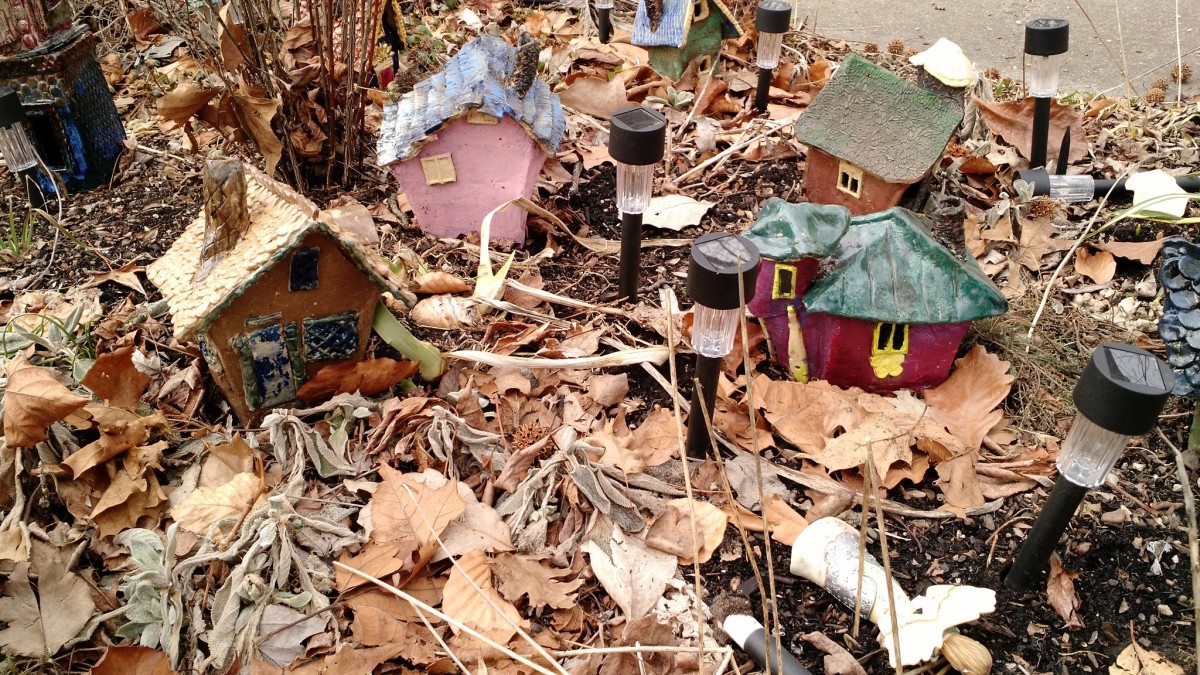
I like to have something around which to organize my walking. Training for our big Kalamazoo to South Haven hike worked great, but having completed that I was looking for something new.
Via Nerd Fitness’s How to walk to Mordor page, I found this little page on Walking to Rivendell, and I think that just might be what I was looking for.
Way back in 2003, some clever people got the idea to go through The Fellowship of the Ring (and a handy Atlas of Middle Earth) and note down all the legs of Frodo’s journey from Hobbiton to Rivendell. Then, as they did their own daily walking, they tracked their progress, noting each milestone as they passed it. (Five miles along; crossed the Great Road from the Brandywine Bridge and entered Tookland.)
Jackie doesn’t seem to have the same strange urge I do to organize walks around some arbitrary or fantasy goal, but she has embraced the idea with some enthusiasm, and decided that we should begin at the beginning and follow the path of Bilbo’s journey to Rivendell. It begins with a hurried dash from Bag End to The Green Dragon in Bywater, then down the Great East Road to a camp site a couple of miles past the three farthing stone, for a total of 11 miles.
We won’t match Bilbo’s journey day by day, but we thought we’d at least start with an 11-mile walk to get into the spirit of the thing.
So yesterday we did.
To make the mileage come out right (and to avoid a boring bit of the walk that we do all the time), we took the bus to campus and started our walk there.
From the Research Park (just across the street from my old office) we walked through campus and on to the Urbana Library (where we returned a library book and checked out another), then went across the street to Lincoln Square Village where we had lunch in their little food court. We went back to the library where we split a brownie for desert and lingered over coffee. Then we headed west across the north end of campus, paused briefly in the Engineering Quad so I could play just a bit of Ingress, and proceeded to the water amenities at 2nd street.
We’d had lunch early, so it was at just about this point that the vitamin D window opened. It was preternaturally warm and sunny, so I took off my jacket and put it in my pack and we spent a half hour or so comprehensively walking the paths through both halves of the water amenities (with my arms exposed to the deadly ultraviolet light of the sun) before heading on to downtown Champaign. We walked through West Side Park, near our 2014 summer place, and then turned south and walked past our 2014–2015 winter palace.
Not far south of there, we passed a house where the grassy verge between the sidewalk and the road was filled with these tiny ceramic houses:
Not exactly Rivendell’s last homely house, but I felt they were adequately in the spirit of elven houses anyway.
From there we proceeded to Hessel Park, and thence along familiar paths to home.
I neglected to run Endomondo, but Google Fit claims I walked 11.1 miles.
It was a great walk! Jackie had a sore shoulder and didn’t want to carry a pack, so I carried not only the library book, but also the first aid kit, our lunches, and water for two.
Speaking of water, last year Jackie bought one of these Camelbak water bottles, and was very pleased with it. I was happy enough using bicycle-style water bottles. But—by sheerest happenstance—the kindly admins at Wise Bread gave me (as a thank-you gift for being one of their writers) the exact same water bottle as Jackie’s—except that mine has the Wise Bread logo.
These bottles are a little bigger than the ones I carried last year. That together with the library book made my pack a little heavier—enough to be noticeable, but not too much for a walk to Rivendell.
I wore my minimalist boots, which seemed like a nice compromise between my regular hiking boots and going barefoot like a hobbit. In the summer I plan to get back to barefoot walking in a big way (although it may be a while before I’m taking my long walks barefoot).
Achievement unlocked: Marathon distance
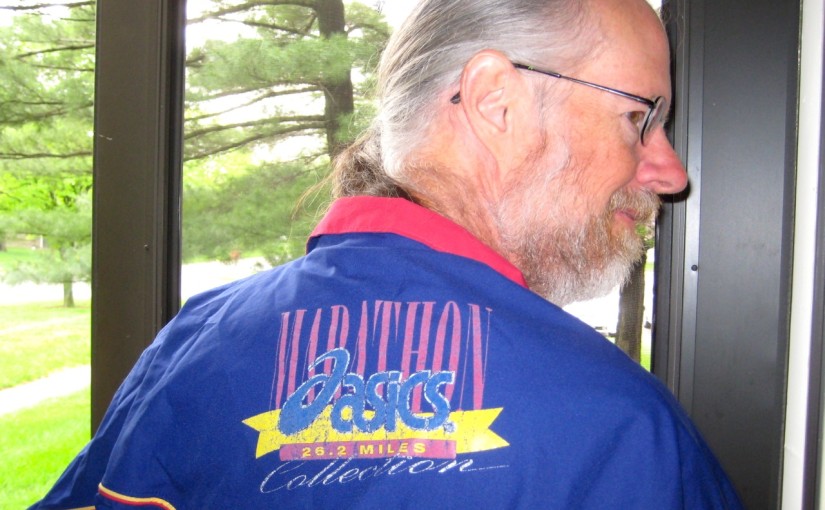
Over the past three years, Jackie and I have done a lot of walks where the distance came in at around 20 miles, but we’d never actually reached 26.2. Yesterday we did.
In many ways, this was just another training walk for our planned Kal-Haven trail walk—which is why we hadn’t hit this distance before: We’re much more concerned with not hurting ourselves before the big walk than we are with hitting any arbitrary distance in advance.
Still, I’m glad to have finally walked 26.2 miles, because now I don’t have to feel like an imposter when I wear my rain jacket:
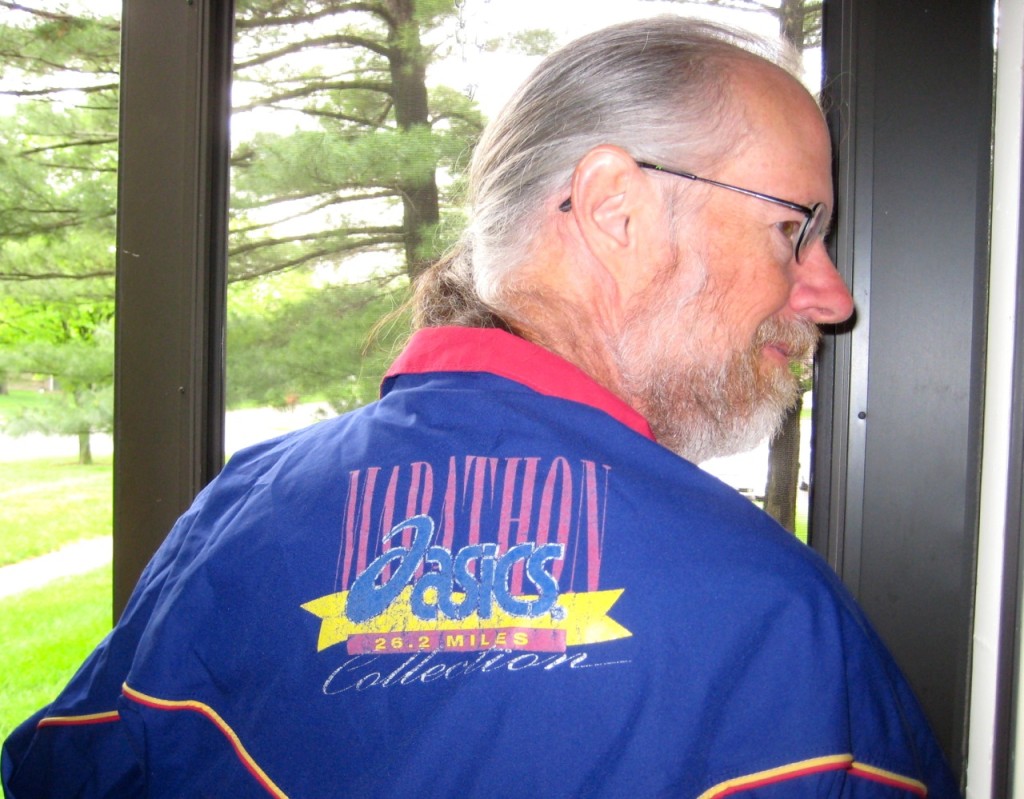
I got this jacket long ago—at least 15 years ago, maybe longer. I remember finding a gore tex rain jacket in the Sierra Trading Post catalog at about an 80% discount. I think it was so cheap mostly because it doesn’t have a hood, which is a deficiency for a rain jacket, but the large marathon graphic on the back may also have put off some people who were not marathoners.
I snapped one up immediately. Only after I had secured mine did I share the catalog with a friend at work who I thought would also be pleased with a cheap gore tex jacket. (He bought one too. For years we were occasional twinsies on warm rainy days.)
All these years it has been my main rain jacket, and all that time I’ve been just a little uncomfortable wearing a jacket so prominently marked as being for marathoners. Now, finally, I can quit worrying about it.
We were walking rather than running, so we were on the road a long time—almost ten and a half hours. (The people who win marathons run them in a little over 2 hours; middle-of-the-pack runners tend to finish in 3–4 hours.)
It was a great walk, although we were feeling pretty tired the last few miles. We went up to our old neighborhood and walked around our old apartment complex. (It looks a bit more empty than when we were there.) We walked up the Greenbelt Bikeway, then headed east to our summer place. (It looks exactly the same as it did when we lived there last year.) Then we walked through the water amenities at Second Street, and onward to Busey Woods. Then down Race Street to Orchard Downs and across through the arboretum and the research park. We went north to Florida to cross the railroad tracks, then headed south along the Boulware Trail and on into Savoy. We went west just a bit to take the path along Prospect down to Curtis and thence to home, taking a slightly long route through Winfield Village (with a tiny diversion into our prairie) to be sure we hit the target mileage.
In the end we went 26.4 miles. Here’s the Endomondo data:
New water amenity

I was trying to come up with a word to describe the degree of progress they’d made toward finishing the landscaping here. The dirt is there, so it isn’t landless-scaping, and the contours are in place so it isn’t land-scapelessing. With only one remaining word fragment to work with, all I could come up with is landscape-ingless.
(I blame English for using “landscaping” to refer to both the changes made to the land itself and to features like sculptures and plantings.)
Every since they first tried to sell the community on turning Scott Park into a detention pond by claiming that “anyplace else it would be considered a water amenity,” Jackie and I have been using the term “water amenity” for any feature constructed to deal with the runoff from development.
There’s nothing like calling your ditches, impoundments, detentions, and retention ponds “water amenities” to class up the joint.

